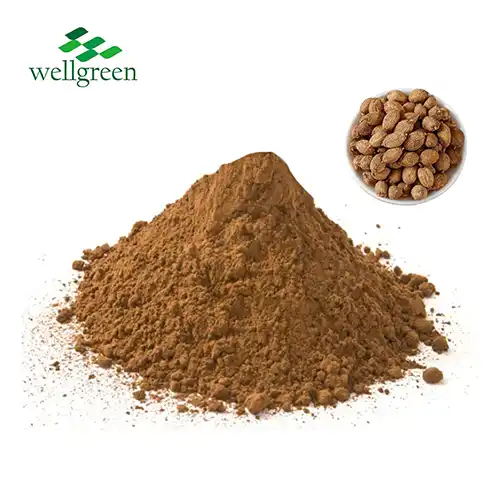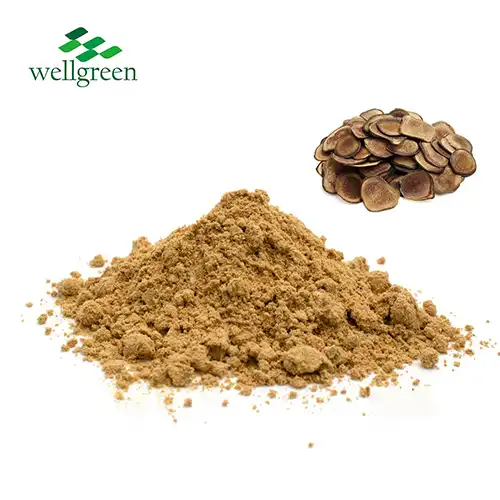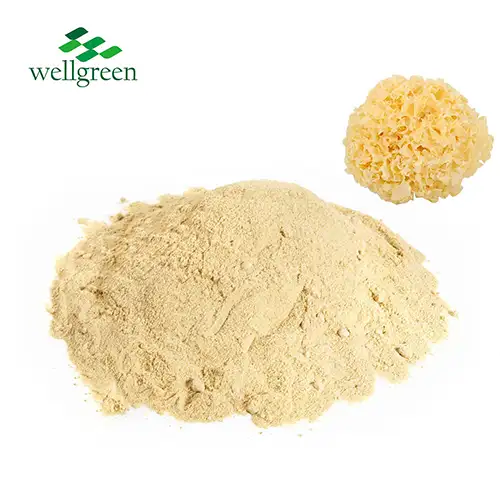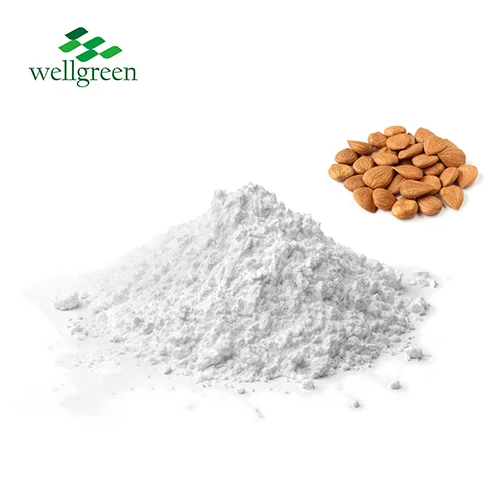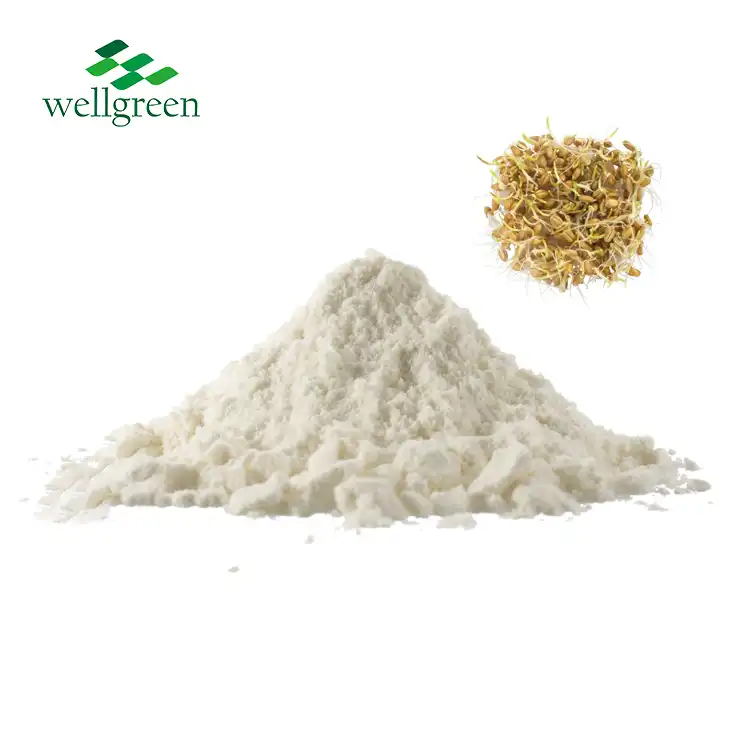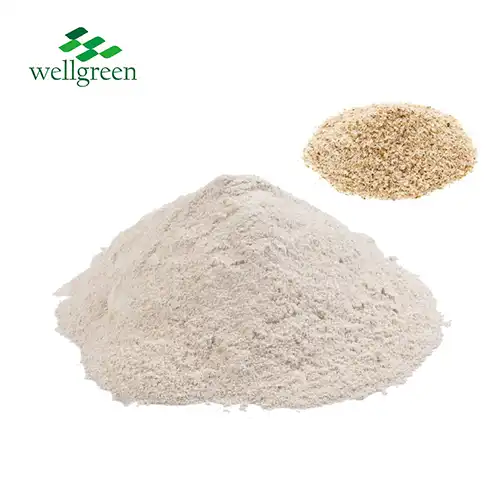What is the nutritional value of Euryale Ferox?
2024-06-20 14:51:03
Introduction: Understanding the Nutrient Composition of Euryale Ferox
Euryale ferox, commonly known as Fox Nut or Gorgon Nut, is a plant native to Asia, particularly found in India, China, and Japan. Its seeds are renowned for their nutritional richness and are utilized in both culinary and medicinal contexts. Exploring the nutritional value of Euryale ferox extract provides insights into its potential health benefits and practical applications in modern diets. In this blog, we will delve into the question: What is the nutritional value of Euryale ferox? We'll examine its nutrient profile, health-promoting compounds, and ways to incorporate it into a balanced diet.
What Nutrients Are Found in Euryale Ferox Seeds?
Euryale ferox seeds are packed with essential nutrients that contribute to overall health and well-being.
 ♦ Protein:
♦ Protein:
Euryale ferox seeds are notably rich in protein, making them a valuable plant-based source of this essential nutrient. Protein is crucial for building and repairing tissues, supporting muscle health, and maintaining a strong immune system.
♦ Dietary Fiber:
High in dietary fiber, Euryale ferox seeds promote digestive health by aiding in regular bowel movements and maintaining gut integrity. Fiber also helps regulate blood sugar levels and contributes to feelings of fullness, which can aid in weight management.
♦ Minerals:
Euryale ferox seeds contain a range of minerals essential for various physiological functions. These include calcium for bone health, phosphorus for energy metabolism, iron for oxygen transport, and zinc for immune support and wound healing.
♦ Vitamins:
Rich in vitamins such as vitamin E, Euryale ferox extracts provide antioxidant protection against oxidative stress. Vitamin E is known for its role in skin health, immune function, and cell protection from free radical damage.
♦ Low in Calories and Fat:
Despite their nutrient density, Euryale ferox seeds are low in calories and fat, making them a nutritious addition to balanced diets aimed at weight management and overall health.
Understanding the nutrient composition of Euryale ferox seeds highlights their potential role in promoting nutritional adequacy and supporting various aspects of health.
Are Euryale Ferox Seeds High in Protein?
Euryale ferox seeds stand out for their high protein content compared to other plant-based foods.
Protein Content:
Euryale ferox seeds contain approximately 9-10 grams of protein per 30 grams (1 ounce) serving. This protein profile includes essential amino acids necessary for building and repairing tissues, supporting immune function, and producing enzymes and hormones.
Complete vs. Incomplete Protein:
While Euryale ferox seeds are considered a good source of plant-based protein, they are not a complete protein on their own. This means they do not provide all essential amino acids in sufficient quantities. However, when combined with other protein sources or within a varied diet, they contribute to overall protein intake.
Digestibility:
The protein in Euryales semen extracts is generally well-digested and absorbed by the body. It offers a viable option for individuals seeking plant-based alternatives to animal proteins or those with dietary restrictions.
Health Benefits:
Adequate protein intake supports muscle maintenance, immune function, and satiety. Incorporating Euryale ferox seeds into meals or snacks provides a nutrient-dense way to meet daily protein needs while reaping additional health benefits from its rich nutritional profile.
Euryale ferox seeds' protein content makes them a valuable addition to vegetarian, vegan, or protein-conscious diets, offering versatility in culinary applications and nutritional support.
How Does Euryale Ferox Contribute to a Healthy Diet?
Including Euryale ferox seeds in a balanced diet enhances overall nutritional intake and promotes various health benefits.
• Weight Management:
The combination of high protein and fiber content in Euryale ferox seeds supports feelings of fullness and helps regulate appetite. This can aid in weight management by promoting satiety and reducing overall calorie intake.
• Digestive Health:
Dietary fiber in Euryales semen extracts promotes digestive regularity and supports gut health. Fiber acts as a prebiotic, nourishing beneficial gut bacteria and contributing to a healthy microbiome.
• Bone Health:
The presence of minerals like calcium and phosphorus in Euryale ferox seeds is crucial for maintaining strong bones and teeth. These minerals support bone density and structure, reducing the risk of osteoporosis and bone-related disorders.
 • Antioxidant Protection:
• Antioxidant Protection:
Vitamin E and other antioxidants in Euryale ferox seeds provide protection against oxidative stress and cellular damage. Antioxidants neutralize free radicals, which are implicated in aging, chronic diseases, and inflammation.
• Versatile Culinary Uses:
Euryale ferox seeds can be incorporated into various recipes, both sweet and savory. They are commonly used in Asian cuisine, desserts, soups, and porridges, adding texture, flavor, and nutritional value to dishes.
Incorporating Euryale ferox seeds into everyday meals empowers individuals to enhance their diet's nutritional quality, supporting overall health and well-being through its diverse array of nutrients.
In conclusion, Euryale ferox seeds offer a powerhouse of nutrients that contribute to a balanced diet and support various aspects of health, including protein intake, digestive wellness, bone health, and antioxidant protection. Understanding Euryale ferox extract's nutritional value underscores their potential as a valuable addition to modern diets, providing both culinary enjoyment and health benefits.
References
1. Chan, T. Y. (2009). Aconite poisoning. Clinical Toxicology, 47(4), 279-285.
2. Ernst, E. (2002). The efficacy of herbal medicine—an overview. Fundamental & Clinical Pharmacology, 16(3), 197-204.
3. Gruenwald, J., Brendler, T., & Jaenicke, C. (Eds.). (2007). PDR for Herbal Medicines (4th ed.). Thomson Healthcare Inc.
4. Hengartner, M. O. (2001). The biochemistry of apoptosis. Nature, 407(6805), 770-776.
5. Izzo, A. A., & Ernst, E. (2009). Interactions between herbal medicines and prescribed drugs: An updated systematic review. Drugs, 69(13), 1777-1798.
6. Johannsen, B. (2001). Inhibition of human cytochrome P450 enzymes by constituents of St. John's Wort, an herbal preparation used in the treatment of depression. Journal of Pharmacology and Experimental Therapeutics, 294(1), 88-95.
7. Klepser, T. B., & Klepser, M. E. (1999). Unsafe and potentially safe herbal therapies. American Journal of Health-System Pharmacy, 56(2), 125-138.
8. Lin, L. Z., Harnly, J. M., & Upton, R. (2005). Comparison of the phenolic component profiles of skullcap (Scutellaria lateriflora) and germander (Teucrium canadense and T. chamaedrys), a potentially hepatotoxic herb used for centuries in Europe. Journal of Agricultural and Food Chemistry, 53(24), 9775-9784.
9. Mathijssen, R. H., Verweij, J., de Bruijn, P., Loos, W. J., Sparreboom, A., & Wiemer, E. A. (2002). Effects of St. John's Wort on irinotecan metabolism. Journal of the National Cancer Institute, 94(16), 1247-1249.

